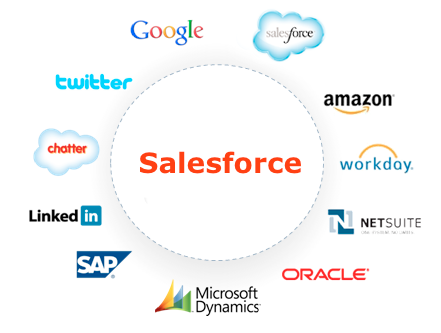Salesforce Integration is the process of connecting Salesforce.com with other 3rd party external systems and applications like Facebook, Linkedin, Gmail, Outlook, HubSoft, Heroku, SAP, Oracle, Microsoft, WordPress CMS and external websites.
In this Salesforce tutorial, we learn how to integrate Salesforce to external systems and applications and SOAP api Salesforce. In Salesforce integration, we have to understand different layers and integration features.
Salesforce Integration layers.
Most Enterprise-level applications have to integrate with other external third party applications. Salesforce Integration can be done on the different layers and integration features available at each level for an enterprise application. They are
- User Interface
- Business logic and
- Data.

User Interface : User Interface Integration is one great way to surface various applications inside Salesforce with little redesign of each individual app. It provides users a single point of entry into multiple applications like Facebook, Linkedin, Gmail, Outlook, WordPress CRM etc.
Business Logic : Business Logic Integration uses Apex Web Services for Inbound and Apex Callouts for Outbound. Business Logic handles a scenario where business logic is spread across several applications to implement the complete end-to-end business process.
- It extends business logic present in Force.com with outside platforms.
- Apex Web Services perform Inbound logic integration.
Apex Web Services allows users to write logic. It requires knowledge of Apex for writing the Apex classes that expose web services to be invoked by client applications. The steps involved are:
- Create a global class.
- Creating an Inner Apex class.
- Create an Apex method.
- In step 4 generate the WSDL (Web Service description Language).
Data Integration : Data Integration uses SOAP APIs and REST APIs. It requires no coding and handles data synchronization requirements, where one application in an enterprise acts as the primary source for a particular business object, like Account.
- SOAP API helps to create, retrieve, update or delete records.
- We can maintain passwords, perform searches using SOAP API.
Conclusion : In this Salesforce tutorial, we have learned about different Salesforce Integration layers and integration features. In our next Salesforce Tutorial, we learn about SOAP API Salesforce basics.
